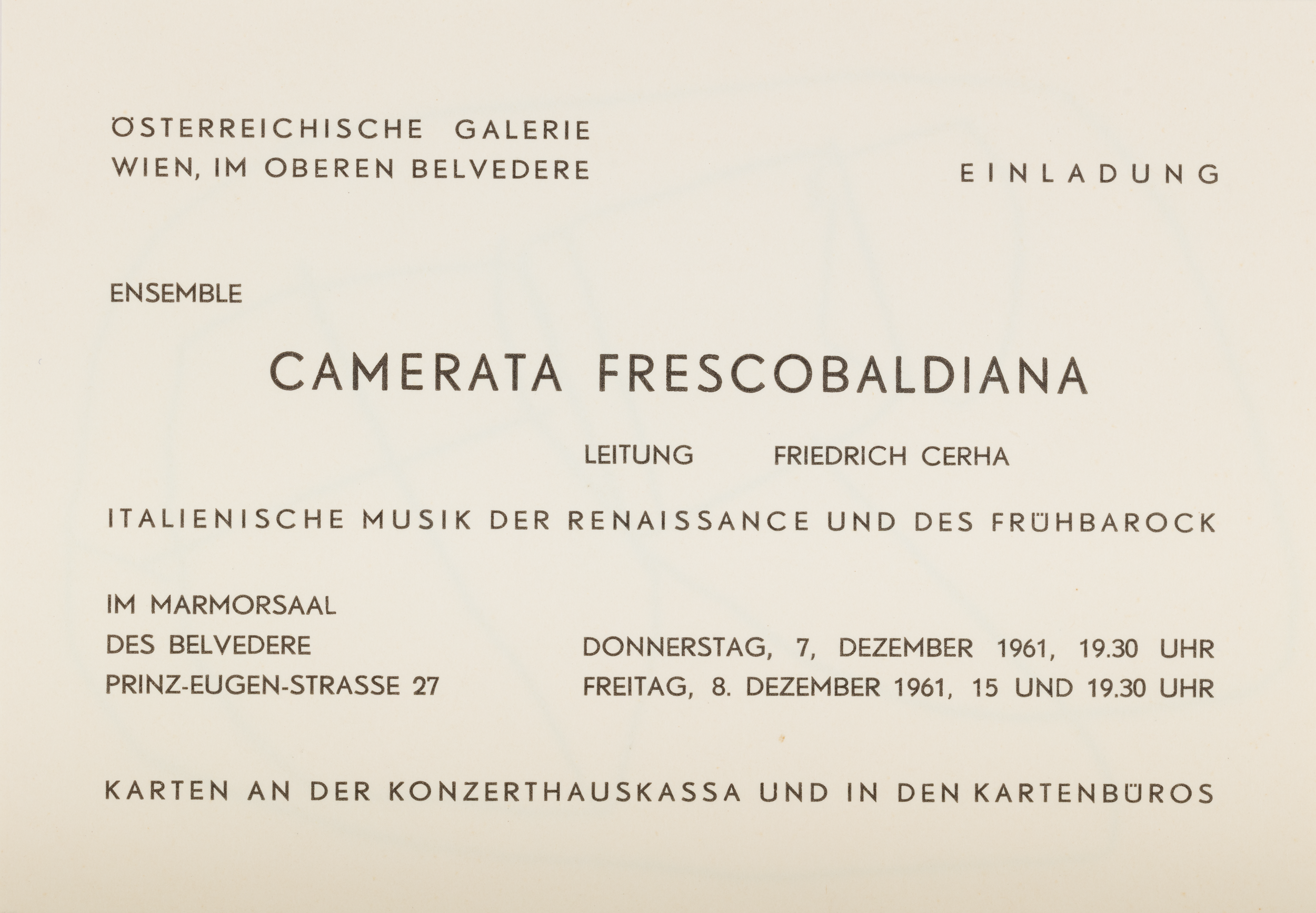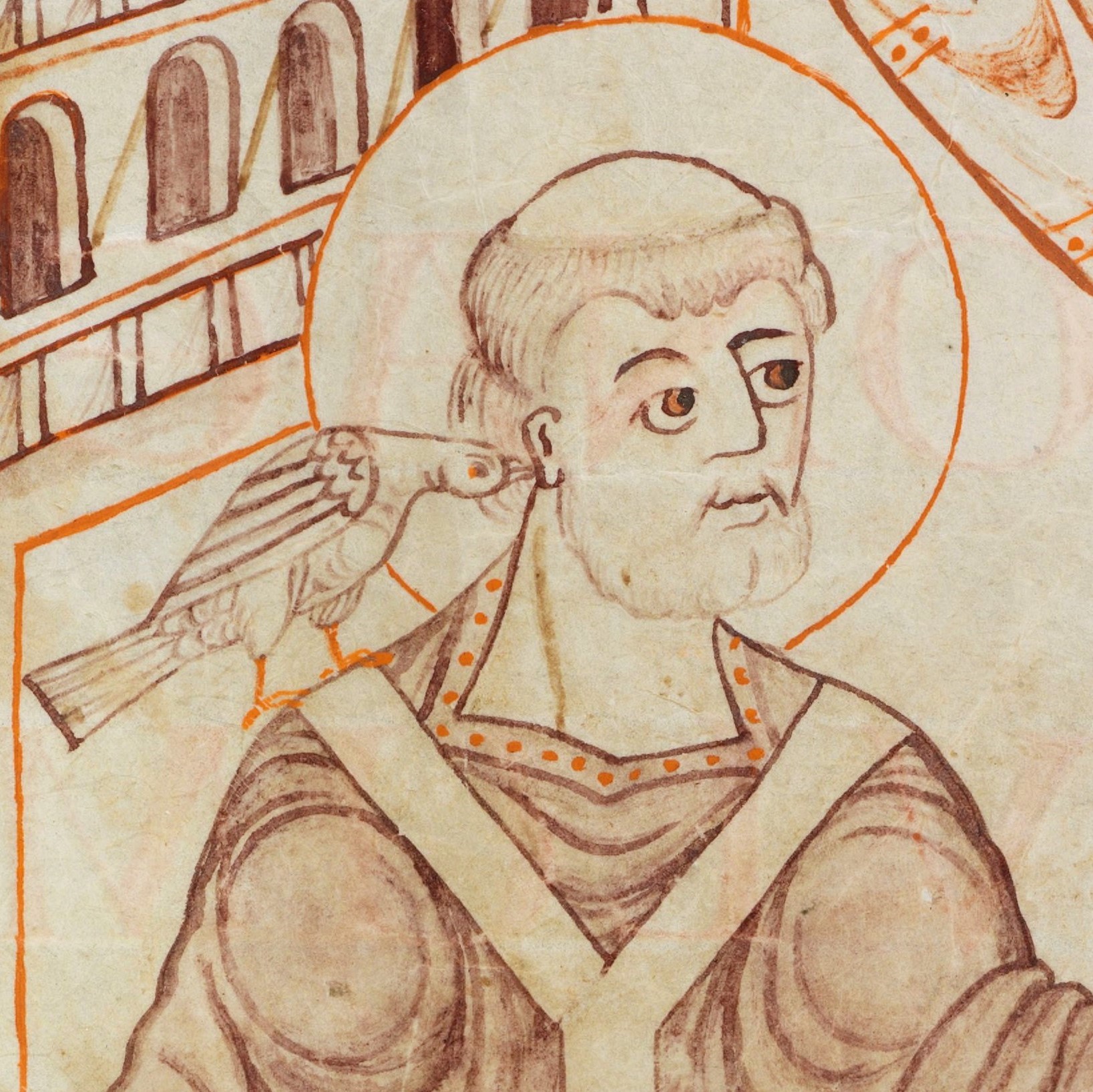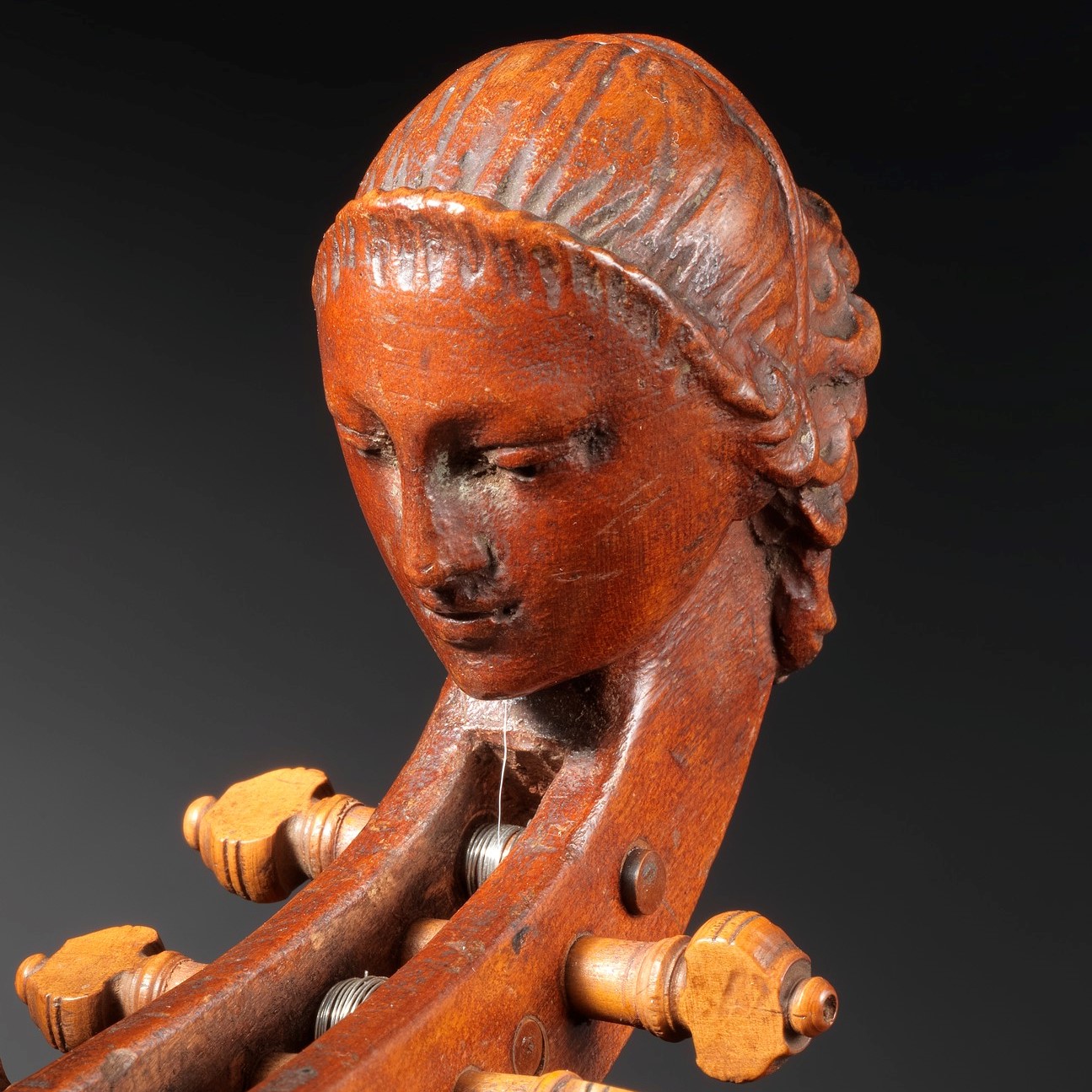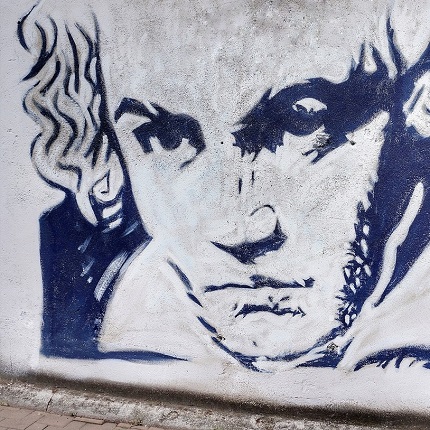The Discovery of History
Looking back
The History of Discovery
Looking ahead
Hans Holbein the Younger, The Ambassadors (section
1533, oil on wood, 206 x 209 cm.
At the centre of the German painter’s most famous painting lies a hodgepodge of artistic and scientific objects. The musical objects include a hymn book of Protestant songs and a lute, referencing the musical history of the Renaissance and the early Baroque, periods which Friedrich Cerha studied in great detail.
Image source: Wikimedia

Invitation to the “Camerata Frescobaldiana” concert, Vienna 1961
Zugang
A […] part of the audience welcomes the composer’s “return” to tradition as if it were the prodigal son who returns to the family’s bosom after being lost at sea, regretful of his mistake. I hope to have made it clear that music history is taking place during our century just as it always has, and that these other stages of development being reached do not refute the previous ones, but rather need them as a breeding ground. […]
My concern: To not trust the boundaries that any untested tastes of an era would like to impose on me, to overcome one-way roads, to remain flexible in experiencing, and to move mindfully within the field of conceivable ideas—older or newer—as long as they are accessible to me through my creative work.
Friedrich Cerha
Schriften: ein Netzwerk, Vienna 2001, p. 72 f.
Composer Bernd Alois Zimmermann once spoke of the “spherical shape of time”, meaning that the past, present, and future “of our spiritual reality”See Bernd Alois Zimmermann, “Vom Handwerk des Komponisten”, in: idem, Intervall und Zeit, ed. Wilhelm Christof Wolfgang Werner Bitter, Mainz 1974, p. 31-37, here p. 35 are not separate from one another, but exist concurrently. With this conceptual framework, music acts as a mediator between the times. This viewpoint is all the more valid today because all the music that has ever been written and recorded is more easily and quickly available than ever before.
For Cerha, the history of music has always been highly meaningful. Even as a 12-year-old, in the 1930s, he could be found on the ground floor of the Vienna State Opera “two or three times a week”,Schriften: ein Netzwerk, Vienna 2001, p. 27 where he became acquainted with the music of Wagner and Strauss. As a violinist, he interpreted the works of Bach and Mendelssohn; as a conductor, he repeatedly showed how the phenomena of today are historically anchored through the concert cycle Wege in unsere Zeit. However, Cerha devoted himself with particular dedication to the early Baroque period: His specially founded ensemble Camerata Frescobaldiana regularly performed early Baroque music, which Cerha edited himself.
His awareness of music history is abundantly reflected throughout his work. Traces of it lead from the revival of ancient forms, as in Toccata, Ricercar, and Passacaglia, tying in to the early days of Western music history in Hymnus, and on to an almost postmodern recomposition in Paraphrase über den Anfang der 9. Sinfonie von Beethoven.
Werke zum Themenfeld
Kathedrale aus Klangmasse
Hymnus, 2000
Neue Musik auf alten Instrumenten
Toccata, Ricercar und Passacaglia, 1951/52
Eine Ouvertüre?
Paraphrase über den Anfang der 9. Sinfonie
von Beethoven, 2010



